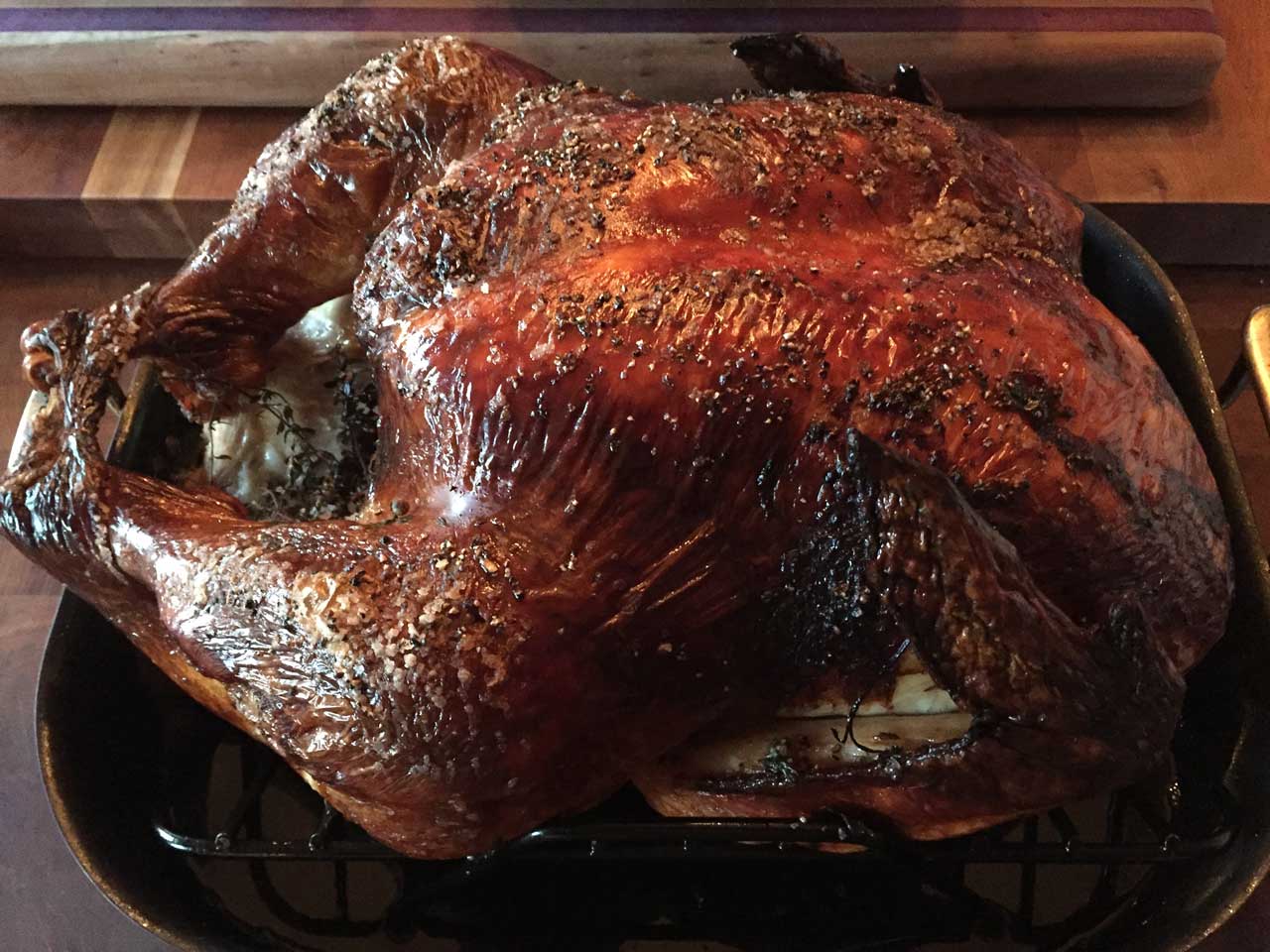
Gary Making Gravy
More Great American Novelists
Now, with Thanksgiving almost upon us, our kitchens are redolent with the holiday fragrance of breads and pies baking in the oven; gravy, beans, and cranberries simmering on the stove. Thursday we will roast the turkey and mash the potatoes. What decadence! What a delight to share the feast with family and friends!
Let us also give thanks to the Great American Writers who were drawn to the East End of Long Island, not only for the land, the sea, and the sky but also for the abundance of the harvest’s bounty - fish, game, and fowl; corn, beans, and squash; and grapes on the vine . . . And the camaraderie of other artists and writers.
In my last Blog we explored the lives and work of some of the 'Sagg Main Set.' Let us continue with more about this literary community and some of their most famous novels.
Can you imagine the conversations and heated debates which took place around their farmhouse tables, or - after dinner - over cocktails at Bobby Van's?

From left, writers James Jones, Truman Capote, Willie Morris and John Knowles stand in front of Bobby Van's Restaurant in 1975. Photo by Jill Krementz
Irwin Shaw (1913 - 1984) Irwin Shaw was born in the South Bronx and began his writing career with scripts for several radio shows, including Dick Tracy. On joining the US Army during World War II he was assigned to George Stevens’ film unit due to his background in screenwriting. Blacklisted in Hollywood during the McCarthy Era, Shaw moved to Europe where he lived for 25 years before returning to the US and the Hamptons.
- The Young Lions (1948): The Young Lions, Irwin Shaw’s first novel, is a vivid and classic novel that portrays the experiences of ordinary soldiers fighting World War II. Told from the points of view of a perceptive young Nazi, a jaded American film producer, and a shy Jewish boy just married to the love of his life, Shaw conveys, as no other novelist has since, the scope, confusion, and complexity of war.
- Rich Man, Poor Man (1970): Though generally derided by the critics, Rich Man, Poor Man was certainly one of Irwin Shaw’s most popular novels and the source for the first television mini-series. The saga traces the fortunes of a first generation German-American family who pursue their dreams in a post-World War II United States.
- Other Novels by Irwin Shaw: The Young Lions (1948), The Troubled Air (1951), Lucy Crown (1956), Two Weeks in Another Town (1960), Voices of a Summer Day (1965), Rich Man, Poor Man (1969/1970), Evening in Byzantium (1973), Night Work (1975), Beggarman, Thief (1977), The Top of the Hill (1979), Bread Upon the Waters (1981), Acceptable Losses (1982)
- Irwin Shaw Interview in The Paris Review 1953
- NY Times Obituary
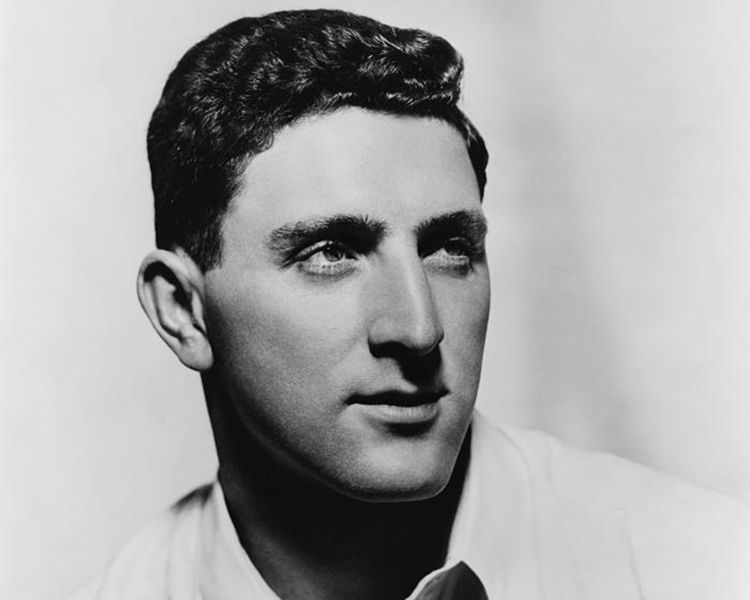
Irwin Shaw - The Paris Review
James Jones (1921 - 1977): James Jones was born in Illinois and joined the ‘Regular Army’ - a refuge for regular people who had nowhere else to go - after graduating from high school. He served in the U.S. 25th Infantry Division before and during World War II. Assigned first to Hawaii, he was an eyewitness to the attacks on Pearl Harbor, the only major writer to have this distinction. He used his experiences in the Army as the basis for much of his writing and is recognized as one of the greatest novelists chronicling how the war affected those who fought in it - earning a National Book Award for ‘From Here to Eternity’ and international acclaim. Having lived in Paris with his wife Gloria, he moved back to the US in 1974, eventually settling in Sagaponack. A heavy drinker and a former Golden Gloves contender, he fit right into the ‘Sagg Main Set.’
- From Here to Eternity (1951): James Jones ‘had been there in the army at Pearl Harbor on December 7, 1941, and what he wanted to tell the world was what it was like when the Zeros swooped out of the sky and began bombing and strafing, not how he felt about it. There’s nothing lyrical or poetical about the prose; it’s staccato, the talk is tough, direct,...’ Robert Gottlieb in The New York Review of Books
- The Movie of ‘From Here to Eternity’ won eight Academy Awards in 1953.
- Other Works include: Some Came Running. Adapted into a film in 1958. The Pistol (1959). The Thin Red Line (1962). Adapted into a film in both 1964 and 1998. Go to the Widow-Maker (1967). The Ice-Cream Headache and Other Stories (1968). The Merry Month of May (1971). A Touch of Danger (1973). Viet Journal (1975). WW II, Grosset & Dunlap, (1975). Whistle (1978) - Completed by Willie Morris (another member of the Sagg Main Set).
- James Jones interview in The Paris Review 1958
- NY Times Obituary
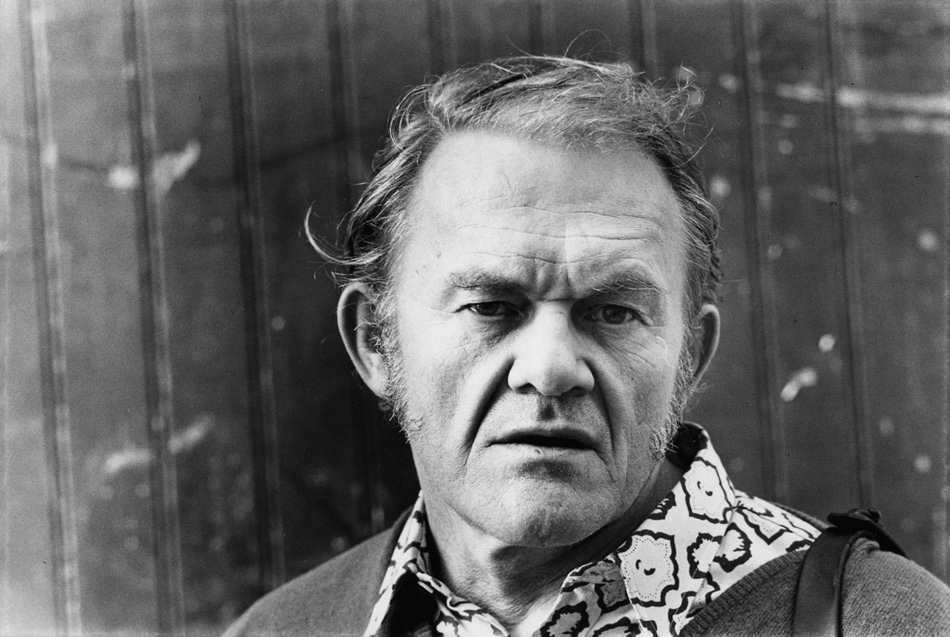
How Good Was James Jones? by Robert Gottlieb The New York Review of Books
John Knowles (1926 - 2001): John Knowles was born in West Virginia to a well-to-do family. He attended Phillips Exeter Academy in Exeter, NH (not far from our farm in Unity) and spent eight months serving in the U.S. Army Air Forces at the end of World War II, before attending Yale University. Knowles’ most famous novel, ‘A Separate Peace’ was based on his time at Exeter and has become part of the syllabus of high-school English classes throughout the United States.
-
A Separate Peace (1959) An American classic and bestseller for over thirty years, Set at a boys' boarding school in New England during the early years of World War II, ‘A Separate Peace’ is timeless in its description of adolescence during a period when the entire country was losing its innocence to World War II.
-
Published by Macmillan in 1960, 'A Separate Peace' won the William Faulkner Foundation Award and the Rosenthal Award of the National Institute of Arts and Letters and soon came to be compared to classics like ''The Catcher in the Rye'' by J. D. Salinger and ''Lord of the Flies'' by William Golding.
-
The novel, which drew good reviews, was also a huge commercial success, selling more than eight million copies. In 1972 it was made into a film by Paramount Pictures, and a subsequent TV Movie in 2004.
-
Other novels, never as successful, include Indian Summer (1966), The Paragon (1971), A Vein of Riches (1978), A Stolen Past (1983), and The Private Life of Axie Reed (1986). He also wrote Double Vision (1964), a travelogue, and Phineas (1968), a collection of short stories.
-
Mr. Knowles once told an interviewer that he did not mind having his reputation rest on a single book. ''It's paid the bills for 30 years,'' he said. 'It has made my career possible. Unlike most writers, I don't have to do anything else to make a living.' NY Times Obituary
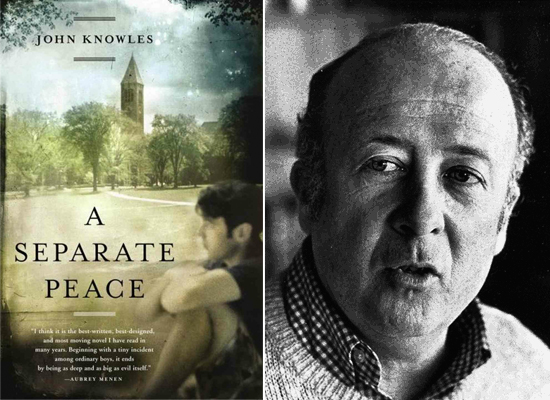
John Knowles, A Separate Peace
Kurt Vonnegut (1922 - 2007) Kurt Vonnegut was born in Indianapolis, Indiana, to a wealthy family who lost everything during the depression. ‘His father gave up on life, and his mother became addicted to alcohol. Kurt Jr.’s lifelong pessimism clearly had its roots in his parents’ despairing response to being blindsided by the Depression. When World War II broke out, Vonnegut was 16; at 20, he entered the army and was shipped off to Europe, where he almost immediately was captured by the Germans in the Battle of the Bulge. He was sent as a POW to Dresden. On February 13, 1945, British and American bombers destroyed the city by dropping high explosives followed by incendiary bombs. The resulting firestorm turned the non-militarized city into an inferno that killed up to 60,000 civilians. Vonnegut and his fellow POWs survived by accident only because they were housed some 60 feet underground in a former meat locker and slaughterhouse. Vonnegut’s job for weeks after the bombing was to gather up and burn the remains of the dead. His experience at Dresden marked him for life and eventually resulted in his literary masterpiece, Slaughterhouse-Five.’ From ‘A Brief Biography of Kurt Vonnegut’ by William Rodney Allen
- Vonnegut began his career as a short story writer, producing successful stories blending science fiction elements of technology with his own brand of political irreverence. One of my favorites (I forget from which collection) was about an alien who comes to earth to warn us that we are hastening our own distinction through pollution. Unfortunately, he is mistaken for a matchstick and dies from being struck repeatedly on the bar by a drunk...
- Complete Stories by Kurt Vonnegut (Penguin Random House - 2007)
- As the market for short stories dried up, he began writing novels which gained a strong following - at first on college campuses, but soon the grown ups started paying attention, too..
- Slaughterhouse-Five: or, The Children’s Crusade (1969, Film 1972) based on his experiences in World War II during his captivity as a POW in Dresden, cemented Vonnegut’s reputation as one of the great sardonic wits of our time. Vonnegut wrote about the film soon after its release, in his preface to Between Time and Timbuktu:
- "I love George Roy Hill and Universal Pictures, who made a flawless translation of my novel Slaughterhouse-Five to the silver screen ... I drool and cackle every time I watch that film, because it is so harmonious with what I felt when I wrote the book."
- Vonnegut, a staple figure in the Hamptons literary scene, remained a prolific writer until his death at 85 in 2007, when he fell on the stoop of his Manhattan Brownstone.
- Other Works by Kurt Vonnegut include: The Sirens of Titan (1959), Mother Night (1961), Cat's Cradle (1963), God Bless You Mr Rosewater (1964), Welcome to the Monkey House; a collection of short stories (1968), Breakfast of Champions (1973), Slapstick, or Lonesome No More (1976), Jailbird (1979), Deadeye Dick (1982), Galapagos (1985), Bluebeard (1988), Hocus Pocus (1990)
- A Hamptons Christmas Gift from Kurt Vonnegut Jr. from Dan’s Papers
- Kurt Vonnegut Playboy Interview
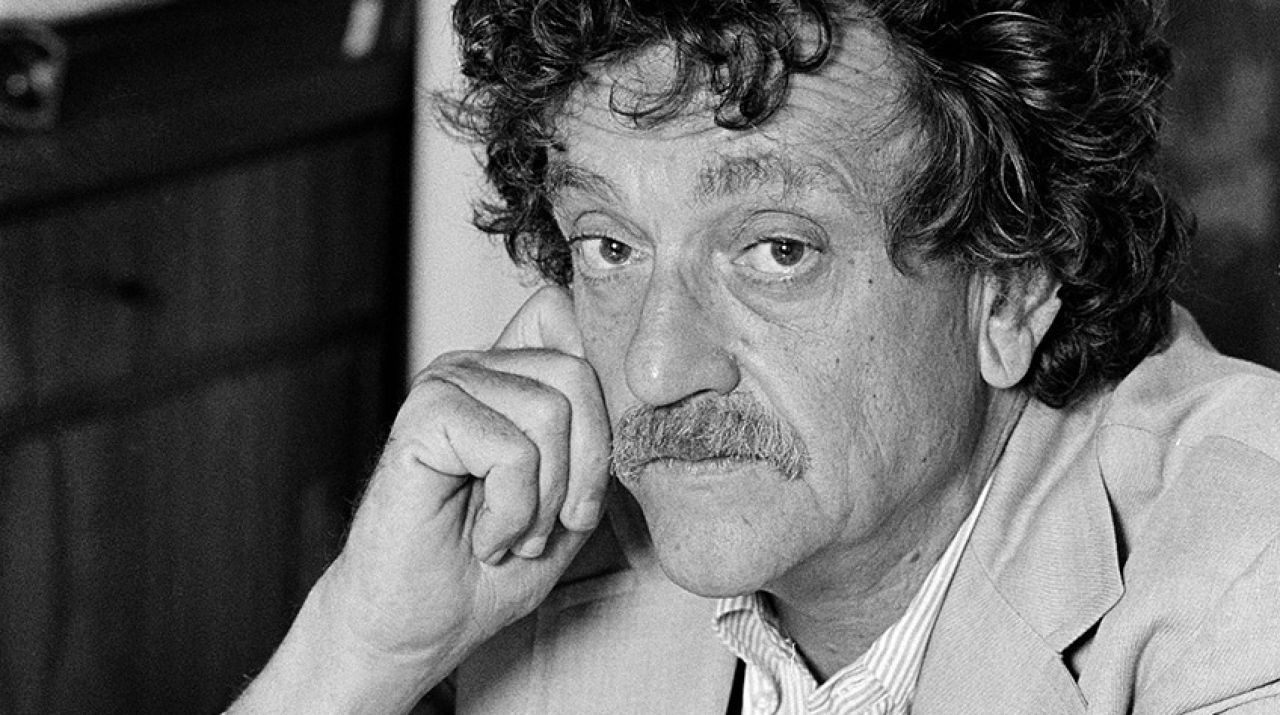
Kurt Vonnegut Playboy Interview 1973
All of these writers, and many more, have contributed greatly to the wealth of knowledge and understanding about mankind and the world we inhabit. Who has time to catch up on all these works (unless you read them all in high school)? But be ambitious; put together a reading list; visit your local bookstore (or one of ours), and read more books!
Until next time, Have a Happy Thanksgiving!!
Sylvia
P.S. Call us or email us to book your stay and explore our literary heritage yourself!
